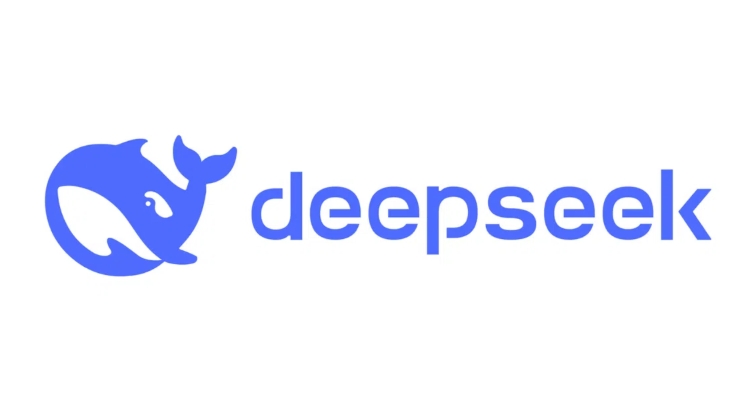涨知识!用逻辑规则进行机器学习
今日不肯埋头,明日何以抬头!每日一句努力自己的话哈哈~哈喽,今天我将给大家带来一篇《涨知识!用逻辑规则进行机器学习》,主要内容是讲解等等,感兴趣的朋友可以收藏或者有更好的建议在评论提出,我都会认真看的!大家一起进步,一起学习!
Skope-rules使用树模型生成规则候选项。首先建立一些决策树,并将从根节点到内部节点或叶子节点的路径视为规则候选项。然后通过一些预定义的标准(如精确度和召回率)对这些候选规则进行过滤。只有那些精确度和召回率高于其阈值的才会被保留。最后,应用相似性过滤来选择具有足够多样性的规则。一般情况下,应用Skope-rules来学习每个根本原因的潜在规则。
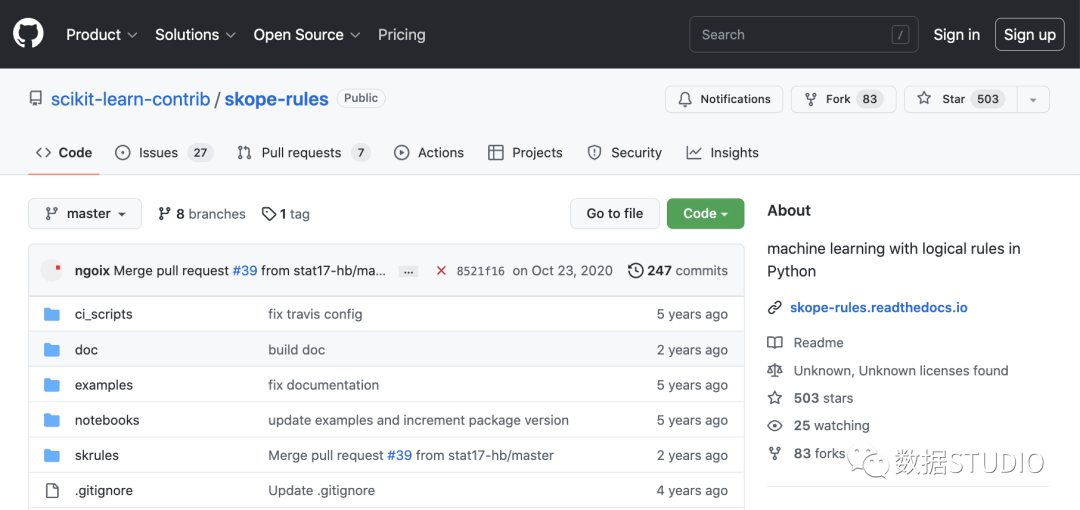
项目地址:https://github.com/scikit-learn-contrib/skope-rules
- Skope-rules是一个建立在scikit-learn之上的Python机器学习模块,在3条款BSD许可下发布。
- Skope-rules旨在学习逻辑的、可解释的规则,用于 "界定 "目标类别,即高精度地检测该类别的实例。
- Skope-rules是决策树的可解释性和随机森林的建模能力之间的一种权衡。
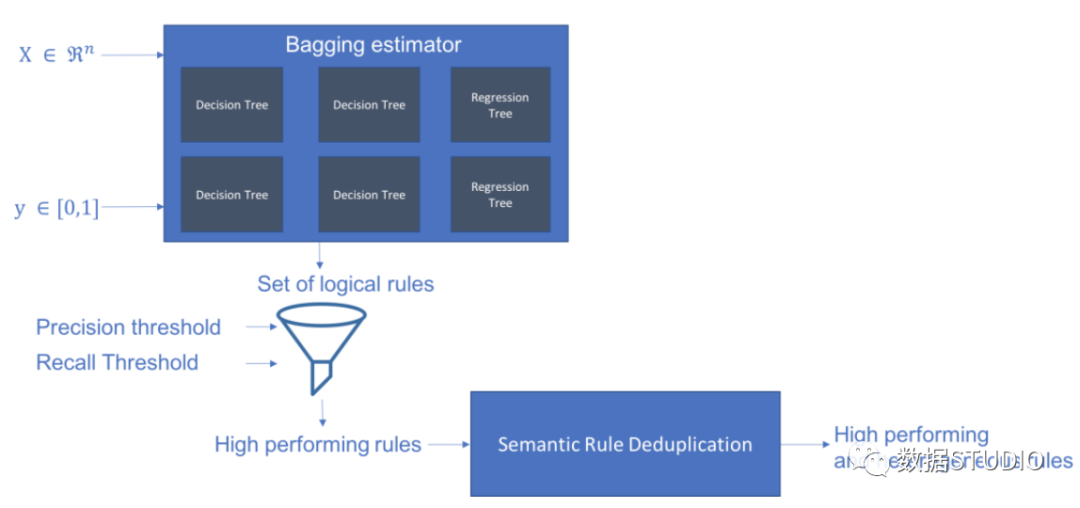
schema
安装
可以使用 pip 获取最新资源:
pip install skope-rules
快速开始
SkopeRules 可用于描述具有逻辑规则的类:
from sklearn.datasets import load_iris
from skrules import SkopeRules
dataset = load_iris()
feature_names = ['sepal_length', 'sepal_width', 'petal_length', 'petal_width']
clf = SkopeRules(max_depth_duplicatinotallow=2,
n_estimators=30,
precision_min=0.3,
recall_min=0.1,
feature_names=feature_names)
for idx, species in enumerate(dataset.target_names):
X, y = dataset.data, dataset.target
clf.fit(X, y == idx)
rules = clf.rules_[0:3]
print("Rules for iris", species)
for rule in rules:
print(rule)
print()
print(20*'=')
print()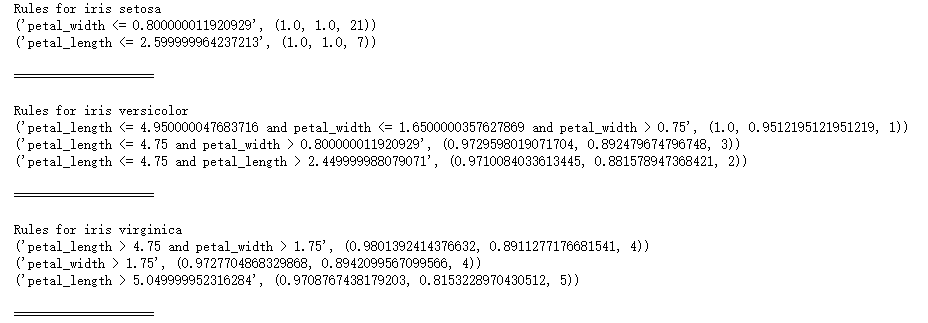
注意:
如果出现如下错误:
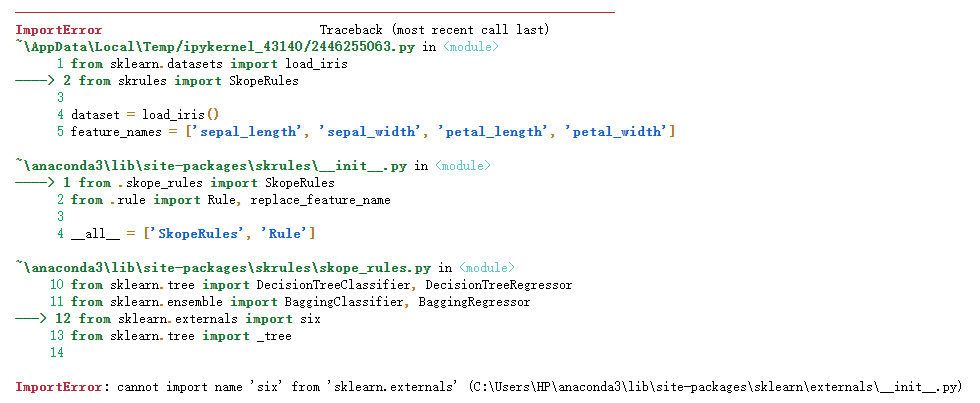
解决方案:
关于 Python 导入错误 : cannot import name 'six' from 'sklearn.externals' ,云朵君在Stack Overflow上找到一个类似的问题:https://stackoverflow.com/questions/61867945/
解决方案如下
import six import sys sys.modules['sklearn.externals.six'] = six import mlrose
亲测有效!
如果使用“score_top_rules”方法,SkopeRules 也可以用作预测器:
from sklearn.datasets import load_boston
from sklearn.metrics import precision_recall_curve
from matplotlib import pyplot as plt
from skrules import SkopeRules
dataset = load_boston()
clf = SkopeRules(max_depth_duplicatinotallow=None,
n_estimators=30,
precision_min=0.2,
recall_min=0.01,
feature_names=dataset.feature_names)
X, y = dataset.data, dataset.target > 25
X_train, y_train = X[:len(y)//2], y[:len(y)//2]
X_test, y_test = X[len(y)//2:], y[len(y)//2:]
clf.fit(X_train, y_train)
y_score = clf.score_top_rules(X_test) # Get a risk score for each test example
precision, recall, _ = precision_recall_curve(y_test, y_score)
plt.plot(recall, precision)
plt.xlabel('Recall')
plt.ylabel('Precision')
plt.title('Precision Recall curve')
plt.show()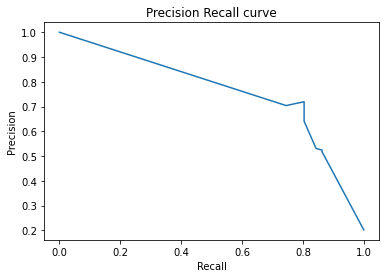
实战案例
本案例展示了在著名的泰坦尼克号数据集上使用skope-rules。
skope-rules适用情况:
- 解决二分类问题
- 提取可解释的决策规则
本案例分为5个部分
- 导入相关库
- 数据准备
- 模型训练(使用ScopeRules().score_top_rules()方法)
- 解释 "生存规则"(使用SkopeRules().rules_属性)。
- 性能分析(使用SkopeRules.predict_top_rules()方法)。
导入相关库
# Import skope-rules
from skrules import SkopeRules
# Import librairies
import pandas as pd
from sklearn.ensemble import GradientBoostingClassifier, RandomForestClassifier
from sklearn.model_selection import train_test_split
from sklearn.tree import DecisionTreeClassifier
import matplotlib.pyplot as plt
from sklearn.metrics import roc_curve, precision_recall_curve
from matplotlib import cm
import numpy as np
from sklearn.metrics import confusion_matrix
from IPython.display import display
# Import Titanic data
data = pd.read_csv('../data/titanic-train.csv')数据准备
# 删除年龄缺失的行
data = data.query('Age == Age')
# 为变量Sex创建编码值
data['isFemale'] = (data['Sex'] == 'female') * 1
# 未变量Embarked创建编码值
data = pd.concat(
[data,
pd.get_dummies(data.loc[:,'Embarked'],
dummy_na=False,
prefix='Embarked',
prefix_sep='_')],
axis=1
)
# 删除没有使用的变量
data = data.drop(['Name', 'Ticket', 'Cabin',
'PassengerId', 'Sex', 'Embarked'],
axis = 1)
# 创建训练及测试集
X_train, X_test, y_train, y_test = train_test_split(
data.drop(['Survived'], axis=1),
data['Survived'],
test_size=0.25, random_state=42)
feature_names = X_train.columns
print('Column names are: ' + ' '.join(feature_names.tolist())+'.')
print('Shape of training set is: ' + str(X_train.shape) + '.')Column names are: Pclass Age SibSp Parch Fare isFemale Embarked_C Embarked_Q Embarked_S. Shape of training set is: (535, 9).
模型训练
# 训练一个梯度提升分类器,用于基准测试 gradient_boost_clf = GradientBoostingClassifier(random_state=42, n_estimators=30, max_depth = 5) gradient_boost_clf.fit(X_train, y_train) # 训练一个随机森林分类器,用于基准测试 random_forest_clf = RandomForestClassifier(random_state=42, n_estimators=30, max_depth = 5) random_forest_clf.fit(X_train, y_train) # 训练一个决策树分类器,用于基准测试 decision_tree_clf = DecisionTreeClassifier(random_state=42, max_depth = 5) decision_tree_clf.fit(X_train, y_train) # 训练一个 skope-rules-boosting 分类器 skope_rules_clf = SkopeRules(feature_names=feature_names, random_state=42, n_estimators=30, recall_min=0.05, precision_min=0.9, max_samples=0.7, max_depth_duplicatinotallow= 4, max_depth = 5) skope_rules_clf.fit(X_train, y_train) # 计算预测分数 gradient_boost_scoring = gradient_boost_clf.predict_proba(X_test)[:, 1] random_forest_scoring = random_forest_clf.predict_proba(X_test)[:, 1] decision_tree_scoring = decision_tree_clf.predict_proba(X_test)[:, 1] skope_rules_scoring = skope_rules_clf.score_top_rules(X_test)
"生存规则" 的提取
# 获得创建的生存规则的数量
print("用SkopeRules建立了" + str(len(skope_rules_clf.rules_)) + "条规则n")
# 打印这些规则
rules_explanations = [
"3岁以下和37岁以下,在头等舱或二等舱的女性。"
"3岁以上乘坐头等舱或二等舱,支付超过26欧元的女性。"
"坐一等舱或二等舱,支付超过29欧元的女性。"
"年龄在39岁以上,在头等舱或二等舱的女性。"
]
print('其中表现最好的4条 "泰坦尼克号生存规则" 如下所示:/n')
for i_rule, rule in enumerate(skope_rules_clf.rules_[:4])
print(rule[0])
print('->'+rules_explanations[i_rule]+ 'n')用SkopeRules建立了9条规则。 其中表现最好的4条 "泰坦尼克号生存规则" 如下所示: Age 2.5 and Pclass 0.5 -> 3岁以下和37岁以下,在头等舱或二等舱的女性。 Age > 2.5 and Fare > 26.125 and Pclass 0.5 -> 3岁以上乘坐头等舱或二等舱,支付超过26欧元的女性。 Fare > 29.356250762939453 and Pclass 0.5 -> 坐一等舱或二等舱,支付超过29欧元的女性。 Age > 38.5 and Pclass 0.5 -> 年龄在39岁以上,在头等舱或二等舱的女性。
def compute_y_pred_from_query(X, rule):
score = np.zeros(X.shape[0])
X = X.reset_index(drop=True)
score[list(X.query(rule).index)] = 1
return(score)
def compute_performances_from_y_pred(y_true, y_pred, index_name='default_index'):
df = pd.DataFrame(data=
{
'precision':[sum(y_true * y_pred)/sum(y_pred)],
'recall':[sum(y_true * y_pred)/sum(y_true)]
},
index=[index_name],
columns=['precision', 'recall']
)
return(df)
def compute_train_test_query_performances(X_train, y_train, X_test, y_test, rule):
y_train_pred = compute_y_pred_from_query(X_train, rule)
y_test_pred = compute_y_pred_from_query(X_test, rule)
performances = None
performances = pd.concat([
performances,
compute_performances_from_y_pred(y_train, y_train_pred, 'train_set')],
axis=0)
performances = pd.concat([
performances,
compute_performances_from_y_pred(y_test, y_test_pred, 'test_set')],
axis=0)
return(performances)
print('Precision = 0.96 表示规则确定的96%的人是幸存者。')
print('Recall = 0.12 表示规则识别的幸存者占幸存者总数的12%n')
for i in range(4):
print('Rule '+str(i+1)+':')
display(compute_train_test_query_performances(X_train, y_train,
X_test, y_test,
skope_rules_clf.rules_[i][0])
)Precision = 0.96 表示规则确定的96%的人是幸存者。 Recall = 0.12 表示规则识别的幸存者占幸存者总数的12%。
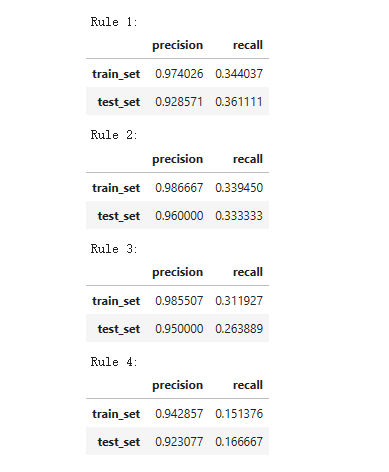
模型性能检测
def plot_titanic_scores(y_true, scores_with_line=[], scores_with_points=[],
labels_with_line=['Gradient Boosting', 'Random Forest', 'Decision Tree'],
labels_with_points=['skope-rules']):
gradient = np.linspace(0, 1, 10)
color_list = [ cm.tab10(x) for x in gradient ]
fig, axes = plt.subplots(1, 2, figsize=(12, 5),
sharex=True, sharey=True)
ax = axes[0]
n_line = 0
for i_score, score in enumerate(scores_with_line):
n_line = n_line + 1
fpr, tpr, _ = roc_curve(y_true, score)
ax.plot(fpr, tpr, linestyle='-.', c=color_list[i_score], lw=1, label=labels_with_line[i_score])
for i_score, score in enumerate(scores_with_points):
fpr, tpr, _ = roc_curve(y_true, score)
ax.scatter(fpr[:-1], tpr[:-1], c=color_list[n_line + i_score], s=10, label=labels_with_points[i_score])
ax.set_title("ROC", fnotallow=20)
ax.set_xlabel('False Positive Rate', fnotallow=18)
ax.set_ylabel('True Positive Rate (Recall)', fnotallow=18)
ax.legend(loc='lower center', fnotallow=8)
ax = axes[1]
n_line = 0
for i_score, score in enumerate(scores_with_line):
n_line = n_line + 1
precision, recall, _ = precision_recall_curve(y_true, score)
ax.step(recall, precision, linestyle='-.', c=color_list[i_score], lw=1, where='post', label=labels_with_line[i_score])
for i_score, score in enumerate(scores_with_points):
precision, recall, _ = precision_recall_curve(y_true, score)
ax.scatter(recall, precision, c=color_list[n_line + i_score], s=10, label=labels_with_points[i_score])
ax.set_title("Precision-Recall", fnotallow=20)
ax.set_xlabel('Recall (True Positive Rate)', fnotallow=18)
ax.set_ylabel('Precision', fnotallow=18)
ax.legend(loc='lower center', fnotallow=8)
plt.show()
plot_titanic_scores(y_test,
scores_with_line=[gradient_boost_scoring, random_forest_scoring, decision_tree_scoring],
scores_with_points=[skope_rules_scoring]
)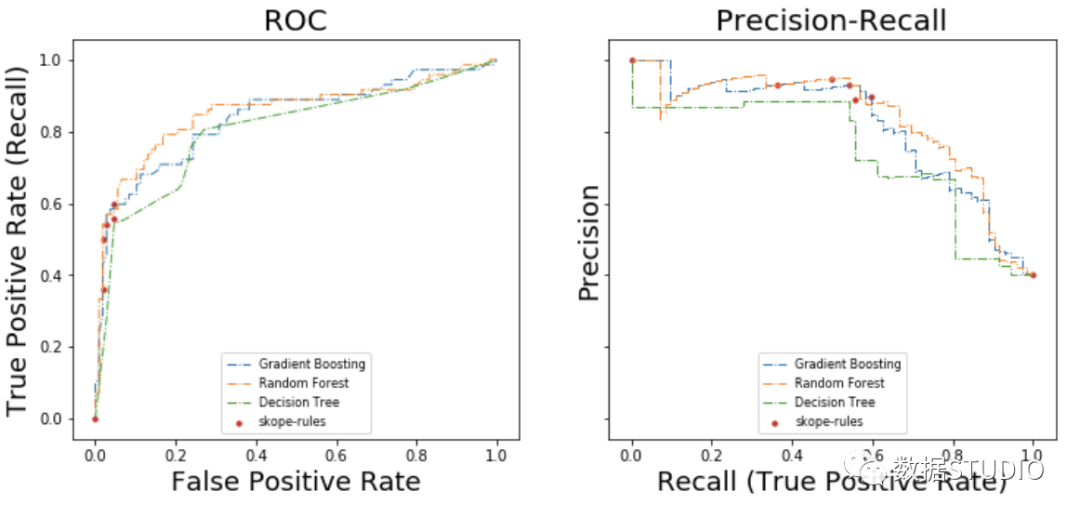
在ROC曲线上,每个红点对应于激活的规则(来自skope-rules)的数量。例如,最低点是1个规则(最好的)的结果点。第二低点是2条规则结果点,等等。
在准确率-召回率曲线上,同样的点是用不同的坐标轴绘制的。警告:左边的第一个红点(0%召回率,100%精度)对应于0条规则。左边的第二个点是第一个规则,等等。
从这个例子可以得出一些结论。
- skope-rules的表现比决策树好。
- skope-rules的性能与随机森林/梯度提升相似(在这个例子中)。
- 使用4个规则可以获得很好的性能(61%的召回率,94%的精确度)(在这个例子中)。
n_rule_chosen = 4
y_pred = skope_rules_clf.predict_top_rules(X_test, n_rule_chosen)
print('The performances reached with '+str(n_rule_chosen)+' discovered rules are the following:')
compute_performances_from_y_pred(y_test, y_pred, 'test_set')
predict_top_rules(new_data, n_r)方法用来计算对new_data的预测,其中有前n_r条skope-rules规则。
今天关于《涨知识!用逻辑规则进行机器学习》的内容介绍就到此结束,如果有什么疑问或者建议,可以在golang学习网公众号下多多回复交流;文中若有不正之处,也希望回复留言以告知!
 预见2032:探索人工智能与开发者的下一个十年
预见2032:探索人工智能与开发者的下一个十年
- 上一篇
- 预见2032:探索人工智能与开发者的下一个十年

- 下一篇
- 流浪地球2:无人驾驶技术给图恒宇带来的不是灾难,而是无限趋近完美的探索
-

- 科技周边 · 人工智能 | 8小时前 |
- 爆款AI视频生成器免费入口推荐
- 117浏览 收藏
-

- 科技周边 · 人工智能 | 8小时前 |
- Kling物理模拟教程:真实交互设置详解
- 477浏览 收藏
-
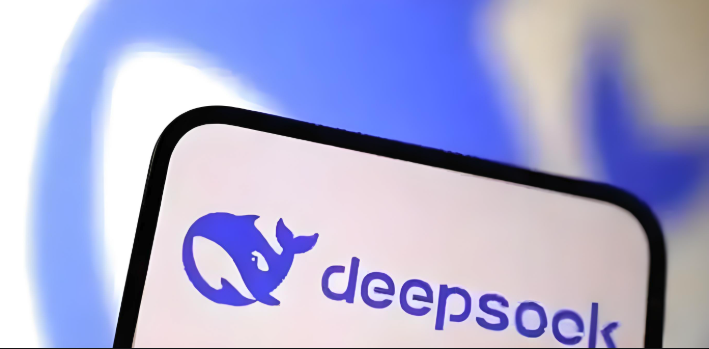
- 科技周边 · 人工智能 | 8小时前 |
- Deepseek满血版与AIPRM对话优化对比
- 217浏览 收藏
-

- 科技周边 · 人工智能 | 9小时前 |
- AIOverviews生成教程与实用技巧
- 458浏览 收藏
-

- 科技周边 · 人工智能 | 9小时前 |
- ChatGPT国内注册方法及最新流程详解
- 246浏览 收藏
-

- 科技周边 · 人工智能 | 10小时前 |
- 豆包网页版入口与使用教程
- 329浏览 收藏
-

- 科技周边 · 人工智能 | 11小时前 |
- 文心一言对话生成器官网入口
- 395浏览 收藏
-

- 前端进阶之JavaScript设计模式
- 设计模式是开发人员在软件开发过程中面临一般问题时的解决方案,代表了最佳的实践。本课程的主打内容包括JS常见设计模式以及具体应用场景,打造一站式知识长龙服务,适合有JS基础的同学学习。
- 543次学习
-

- GO语言核心编程课程
- 本课程采用真实案例,全面具体可落地,从理论到实践,一步一步将GO核心编程技术、编程思想、底层实现融会贯通,使学习者贴近时代脉搏,做IT互联网时代的弄潮儿。
- 516次学习
-

- 简单聊聊mysql8与网络通信
- 如有问题加微信:Le-studyg;在课程中,我们将首先介绍MySQL8的新特性,包括性能优化、安全增强、新数据类型等,帮助学生快速熟悉MySQL8的最新功能。接着,我们将深入解析MySQL的网络通信机制,包括协议、连接管理、数据传输等,让
- 500次学习
-
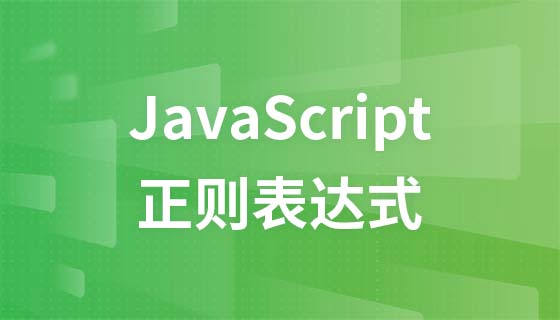
- JavaScript正则表达式基础与实战
- 在任何一门编程语言中,正则表达式,都是一项重要的知识,它提供了高效的字符串匹配与捕获机制,可以极大的简化程序设计。
- 487次学习
-

- 从零制作响应式网站—Grid布局
- 本系列教程将展示从零制作一个假想的网络科技公司官网,分为导航,轮播,关于我们,成功案例,服务流程,团队介绍,数据部分,公司动态,底部信息等内容区块。网站整体采用CSSGrid布局,支持响应式,有流畅过渡和展现动画。
- 485次学习
-
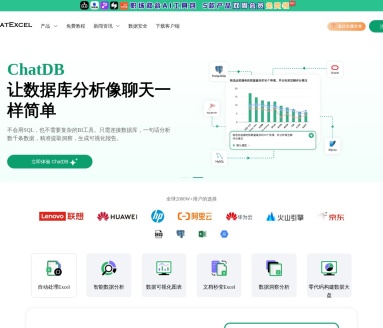
- ChatExcel酷表
- ChatExcel酷表是由北京大学团队打造的Excel聊天机器人,用自然语言操控表格,简化数据处理,告别繁琐操作,提升工作效率!适用于学生、上班族及政府人员。
- 3212次使用
-

- Any绘本
- 探索Any绘本(anypicturebook.com/zh),一款开源免费的AI绘本创作工具,基于Google Gemini与Flux AI模型,让您轻松创作个性化绘本。适用于家庭、教育、创作等多种场景,零门槛,高自由度,技术透明,本地可控。
- 3425次使用
-

- 可赞AI
- 可赞AI,AI驱动的办公可视化智能工具,助您轻松实现文本与可视化元素高效转化。无论是智能文档生成、多格式文本解析,还是一键生成专业图表、脑图、知识卡片,可赞AI都能让信息处理更清晰高效。覆盖数据汇报、会议纪要、内容营销等全场景,大幅提升办公效率,降低专业门槛,是您提升工作效率的得力助手。
- 3455次使用
-
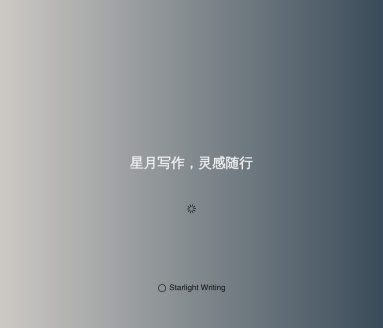
- 星月写作
- 星月写作是国内首款聚焦中文网络小说创作的AI辅助工具,解决网文作者从构思到变现的全流程痛点。AI扫榜、专属模板、全链路适配,助力新人快速上手,资深作者效率倍增。
- 4564次使用
-

- MagicLight
- MagicLight.ai是全球首款叙事驱动型AI动画视频创作平台,专注于解决从故事想法到完整动画的全流程痛点。它通过自研AI模型,保障角色、风格、场景高度一致性,让零动画经验者也能高效产出专业级叙事内容。广泛适用于独立创作者、动画工作室、教育机构及企业营销,助您轻松实现创意落地与商业化。
- 3832次使用
-
- GPT-4王者加冕!读图做题性能炸天,凭自己就能考上斯坦福
- 2023-04-25 501浏览
-
- 单块V100训练模型提速72倍!尤洋团队新成果获AAAI 2023杰出论文奖
- 2023-04-24 501浏览
-
- ChatGPT 真的会接管世界吗?
- 2023-04-13 501浏览
-
- VR的终极形态是「假眼」?Neuralink前联合创始人掏出新产品:科学之眼!
- 2023-04-30 501浏览
-
- 实现实时制造可视性优势有哪些?
- 2023-04-15 501浏览



